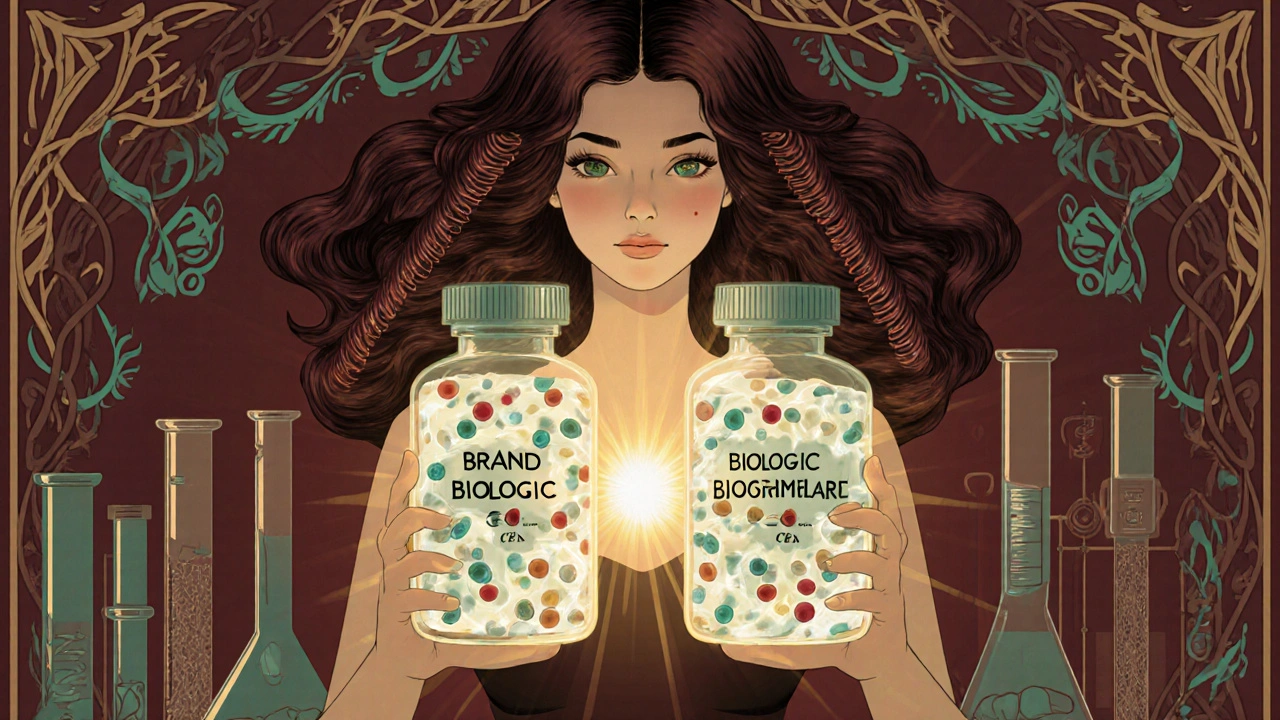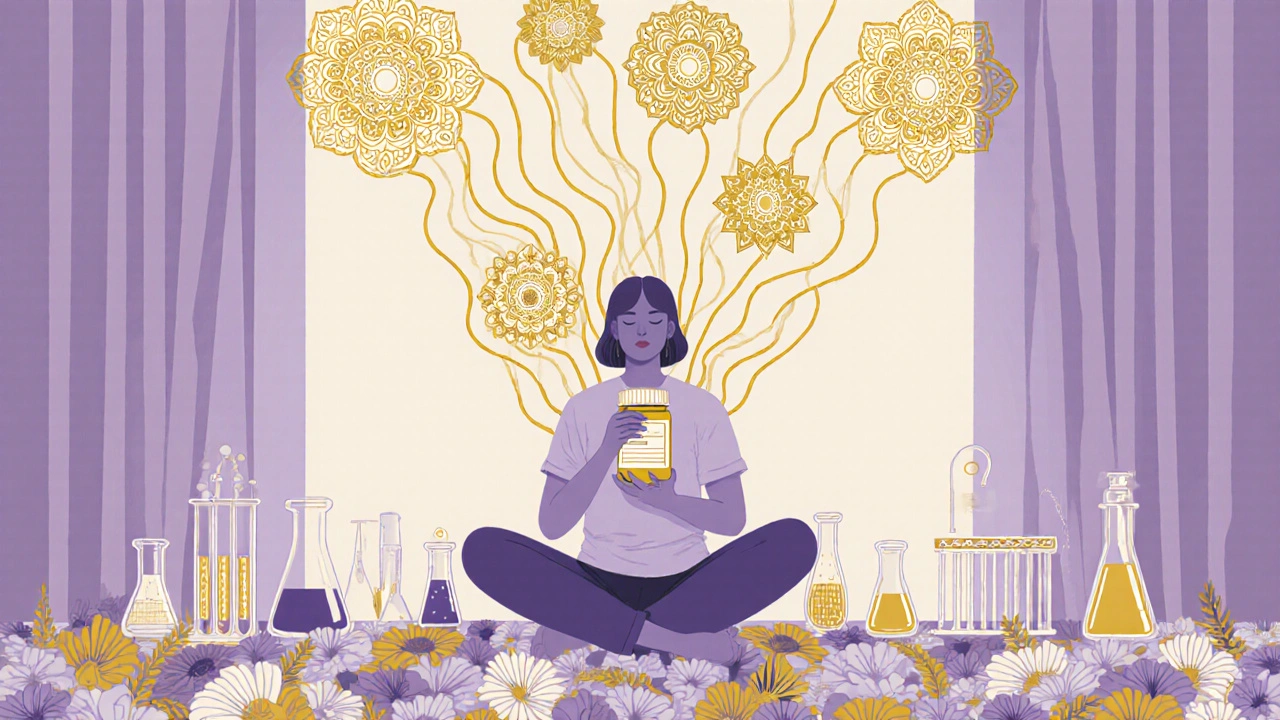Lot-to-Lot Variability in Biologics and Biosimilars: What You Need to Know

Nov, 12 2025
When you take a medication, you expect it to work the same way every time. But with biologics and biosimilars, that’s not as simple as it sounds. Unlike a pill made in a lab from chemicals, these drugs come from living cells-human or animal-and that means no two batches are exactly alike. This isn’t a mistake. It’s normal. It’s called lot-to-lot variability.
What is lot-to-lot variability?
Every time a biologic drug is made, it’s grown inside living cells. These cells aren’t machines-they breathe, change, and respond to tiny shifts in temperature, nutrients, or pH. As a result, each batch, or “lot,” ends up with millions of slightly different versions of the same protein. Some molecules might have extra sugar chains attached. Others might have a single amino acid out of place. These aren’t defects. They’re natural byproducts of biology. The U.S. Food and Drug Administration (FDA) calls this “inherent variation.” It’s built into the process. Even the original brand-name biologic-say, Humira or Enbrel-has lot-to-lot differences. And that’s okay, as long as those differences don’t change how the drug works in the body.Why does this matter for biosimilars?
Biosimilars are not generics. That’s the first thing you need to understand. Generics are exact copies of small-molecule drugs like aspirin or metformin. Their chemical structure is simple. If you make it in a factory, every pill is identical. That’s why generic approval is fast and cheap. Biosimilars? They’re copies of complex biological drugs. You can’t just reverse-engineer them. You have to grow them in cells, just like the original. And because of that, they’ll always have some variation. The goal isn’t to make them identical-it’s to make them highly similar. To get approved, a biosimilar must prove it’s as safe and effective as the original. That means running hundreds of lab tests to compare molecular structure, how the drug behaves in the body, and how patients respond. The FDA looks at every possible difference-not to eliminate variation, but to make sure it’s not clinically meaningful.How do regulators handle this variability?
The FDA doesn’t expect perfection. They expect control. Manufacturers must show they can consistently produce batches within a narrow range of acceptable variation. They track things like glycosylation patterns (sugar attachments), protein folding, and impurity levels. These aren’t just checkboxes-they’re critical data points. For a biosimilar to be labeled “interchangeable,” the bar is even higher. The company must prove that switching between the original and the biosimilar-back and forth, multiple times-won’t hurt the patient. That means running clinical studies where people alternate between the two drugs over months. Only 12 out of the 53 approved biosimilars in the U.S. as of May 2024 have this designation. It’s not about making the drug perfect. It’s about making sure the patient doesn’t notice the difference.
How is this different from small-molecule generics?
Let’s say you take a generic version of Lipitor. The active ingredient is atorvastatin. Every tablet has the same 20 milligrams. The chemical structure is identical. The FDA only needs to prove it dissolves the same way in the body and delivers the same amount of drug. With a biosimilar like a copy of Remicade (infliximab), you’re dealing with a protein that can have over a million different forms in a single bottle. You can’t measure it with a simple blood test. You need advanced tools-mass spectrometers, chromatography machines, cell-based assays-to even see the differences. That’s why biosimilar approval takes years and costs hundreds of millions of dollars. Generics can be approved in months. Biosimilars need full analytical packages, animal studies, and often clinical trials.What does this mean for labs and testing?
The ripple effect of lot-to-lot variability doesn’t stop at the pharmacy. It hits the lab. Many diagnostic tests-like HbA1c for diabetes or troponin for heart attacks-rely on reagents that are themselves biological. When a lab switches to a new lot of a test kit, the results can shift slightly. In one documented case, a change in reagent lot caused an average 0.5% increase in HbA1c readings. That might not sound like much, but for a diabetic patient, it could mean a change in treatment. Lab directors say 78% consider lot-to-lot variation a major challenge. They can’t just rely on control samples. Why? Because control materials don’t always behave like real patient samples. A new reagent lot might pass QC checks but still give different results for actual patients. To catch this, labs use methods like moving averages-tracking the average test result for thousands of patients over time. If the average starts creeping up or down without explanation, they investigate the reagent lot.Why isn’t this a problem for patients?
You might be wondering: if every batch is different, how do we know it’s safe? The answer is oversight. Every lot of a biologic or biosimilar is tested before it’s released. Manufacturers must prove consistency across dozens of batches. The FDA audits their production facilities. They review data from every lot. And here’s the key: patients have been using biologics for over 20 years. We’ve seen millions of doses administered. We know that even with variation, the clinical outcomes remain stable. A patient who switches from one lot of Enbrel to another doesn’t suddenly get worse. That’s because the variation is controlled-it’s within a safe, predictable range. Even when switching from a brand-name biologic to a biosimilar, studies show no increase in side effects or loss of effectiveness. In fact, many patients switch without even knowing it.
What’s changing in the industry?
The market for biosimilars is growing fast. In 2023, it was worth $10.6 billion. By 2028, it’s expected to hit $35.8 billion. More companies are entering the space-Amgen, Pfizer, Sandoz-and more complex drugs are being targeted: antibody-drug conjugates, cell therapies, even gene therapies. Technology is helping too. New tools like high-throughput sequencing and AI-powered analytics can detect variations that were invisible a decade ago. This means manufacturers can catch problems earlier and make smarter adjustments during production. The FDA’s approach is evolving too. They now use a “totality of the evidence” strategy-looking at all the data together, not just one test at a time. If analytical, functional, and clinical data all point to similarity, they approve it. By 2026, experts predict 70% of new biosimilar applications will include data for interchangeability, up from 45% in 2023. That means more patients will be able to switch at the pharmacy without needing a doctor’s note.What should you do as a patient?
If you’re on a biologic or biosimilar, you don’t need to worry about lot-to-lot variability. The system is built to protect you. But here’s what you can do:- Keep track of your symptoms. If you notice a change in how you feel after a refill, tell your doctor.
- Ask if your medication is a biosimilar or interchangeable. You have a right to know.
- Don’t assume all biologics are the same. Even if two drugs treat the same condition, they may have different structures and effects.
- Don’t panic if your pharmacy switches your prescription. It’s likely a biosimilar-and it’s been approved to work just as well.
